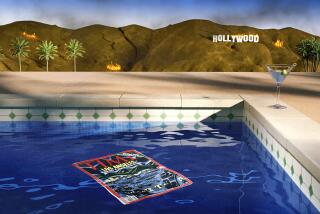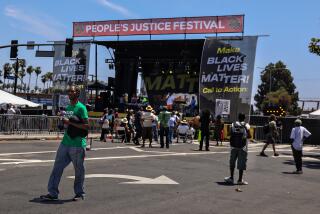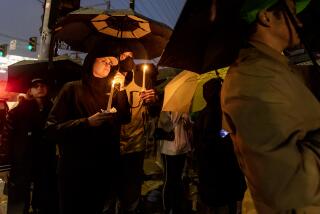George Floyd protests have created a multicultural movement thatâs making history
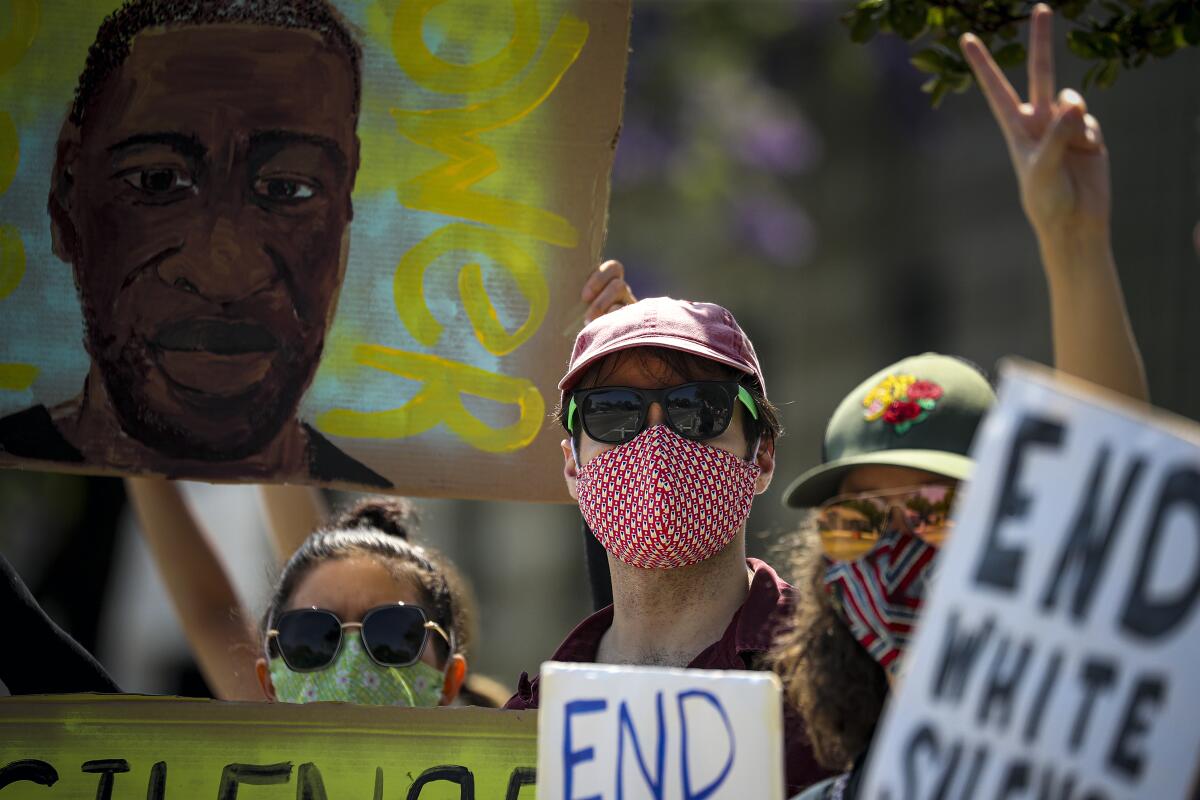
Throughout his life, Alan Michnoffâs engagement with racial justice issues had been ânext to none.â Although the 30-year-old North Hollywood resident had always been aware of police brutality against black people, he had not actively spoken up.
Last weekend, as the George Floyd protests swelled nationwide, something changed. Michnoff came across a passionate Instagram post by a friend. âI am emotionally and physically exhausted yet I continue this fight,â she wrote, demanding that others not be complacent in the face of racism.
âThat just struck a chord with me,â Michnoff said. âA lot of people have been saying that. Just hearing it over and over again, and it being perhaps the right time, it finally hit for me.â
He donated to local bail bond funds and signed petitions demanding charges against the officers involved in Floydâs death and that of Breonna Taylor, a 26-year-old emergency medical technician who was shot by Louisville, Ky., police in her apartment. On social media, Michnoff found link after link to resources for people seeking to support the movement.
âI felt I had no choice but to participate in something so important,â he said on Thursday at a protest in front of the North Hollywood police station. He carried a cardboard sign that read âSilence is violence.â
The protests in the wake of the killing of Floyd â a 46-year-old black man who died after a Minneapolis police officer knelt on his neck while he was begging for air â have mobilized people from all races and walks of life who have not been previously been actively involved in racial justice issues. Many have been educating themselves online, signing petitions and attending protests where they often listen to speakers talk about the racism they face on a daily basis.
In this way, Floydâs killing has created a wide, multicultural activist movement unprecedented in scope when compared with other notorious cases of police abuse. The 1991 videotaped beating of black motorist Rodney King by Los Angeles Police Department officers provoked an international outcry, but it did not spark anything close to this movement.
Instead of spurring city leaders to action after years of police abuse, the King case exposed political gridlock and ineffectiveness at City Hall that culminated with the 1992 riots.
The political and social ramifications of the Floyd protests are already becoming clear. Many cities are considering restrictions on the use of police force, and Los Angeles Mayor Eric Garcetti has proposed cuts to the LAPD. Itâs far from the sweeping defunding of the LAPD demanded by Black Lives Matter but still represents a political sea change.
Activists have also taken the protests into affluent, suburban neighborhoods across the city and found residents joining the marches and expressing their outrage.
âSo many white and non-black folks are staying on message â that if we can lift black lives from the margins of society, we can lift all lives,â said Jody David Armour, a USC law professor.
The broad reach of the protests has marked a significant shift in recognition of the Black Lives Matter movement, which began as a response to the acquittal of George Zimmerman, a neighborhood watch volunteer, in the 2012 killing in Florida of Trayvon Martin, an unarmed black teenager. The campaign grew from a hashtag into a powerful social organizing tool that sought to amplify acts of racism against blacks nationwide.
Its members have been a presence for years at the Los Angeles Police Commission, forcefully decrying shootings and at times disrupting meetings that have ended with the arrest of LAPD critics. But its agenda of reforms saw only limited interest at City Hall â until this last week.
Itâs unclear how deep those reforms will reach and how long the current movement will sustain itself.
Melina Abdullah, co-founder of Black Lives Matter in Los Angeles, said that although the movement in the past had had the support of non-black coalitions, the current protests have brought in new allies.
âThatâs encouraging that people want to stand up despite, maybe, their own privilege,â said Abdullah, a professor at Cal State L.A. âWe also want to make sure that this is not a moment of them getting in but that they are ongoing partners in this work.â
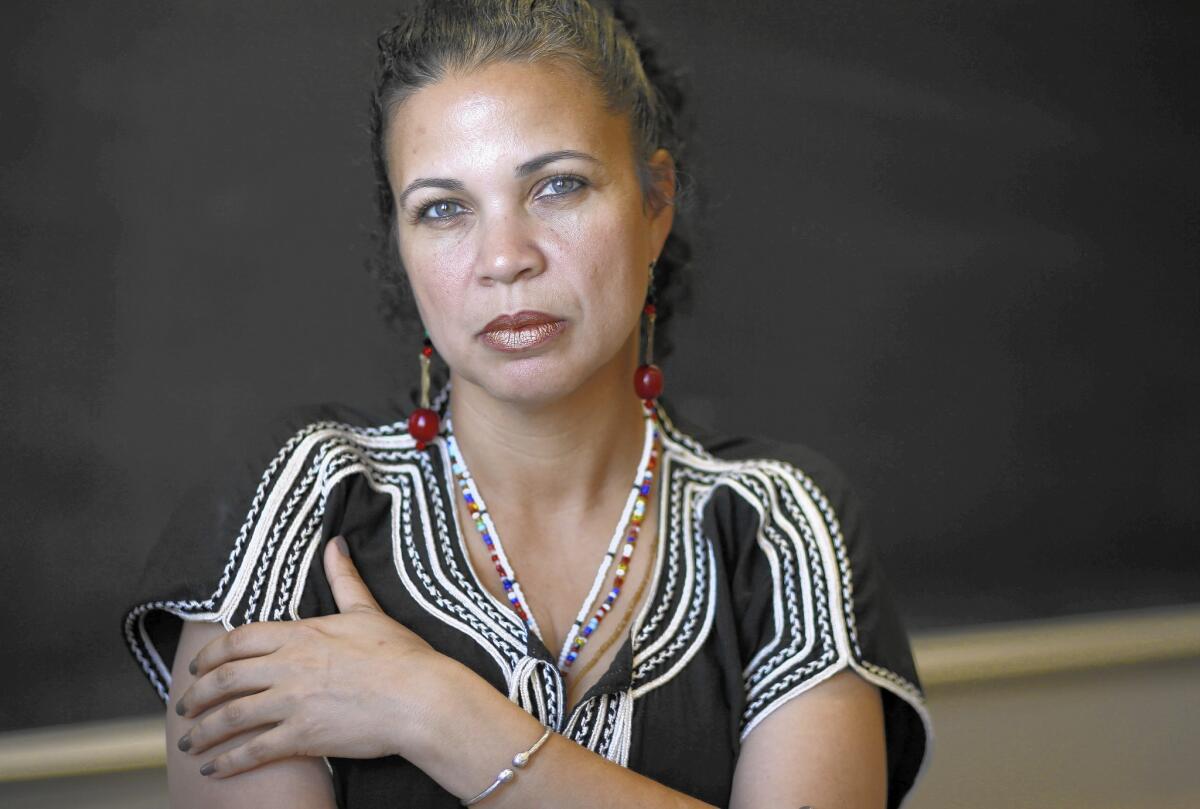
Brenda Stevenson, a professor of history and African American studies at UCLA, said that activists recognized that the support of diverse coalitions was critical to success, pointing to the civil rights movement as an example.
âPeople have been welcoming of all kinds of people, regardless of race, regardless of age,â she said. âThey have welcomed the military who are taking a knee. They have welcomed police in uniform who are taking a knee. People really want this to work, and they know this will work if there is a broad coalition of people with the same basic goals.â
She said the protests had attracted so many allies â including first-time activists â in part because of the coordination among coalition groups and the fact that statements released by workplaces affirming the movement had made people feel more comfortable about getting involved. The high-profile deaths of several black people at the hands of police in a matter of weeks has convinced many of a systemic problem, Stevenson said, adding that the shared vulnerability to the coronavirus may have also worn down barriers between people.
Many new to protesting have reached out to black community leaders. The Rev. Najuma Smith-Pollard, pastor at Word of Encouragement Community Church in Central L.A., has received text messages and emails from acquaintances she does not speak to often who have asked how they can express solidarity.
âIâm encouraged by it,â she said. âIn this country, we need allyship. This is an all-hands-on-deck season. Iâm encouraged because itâs a sign people are awakening.â
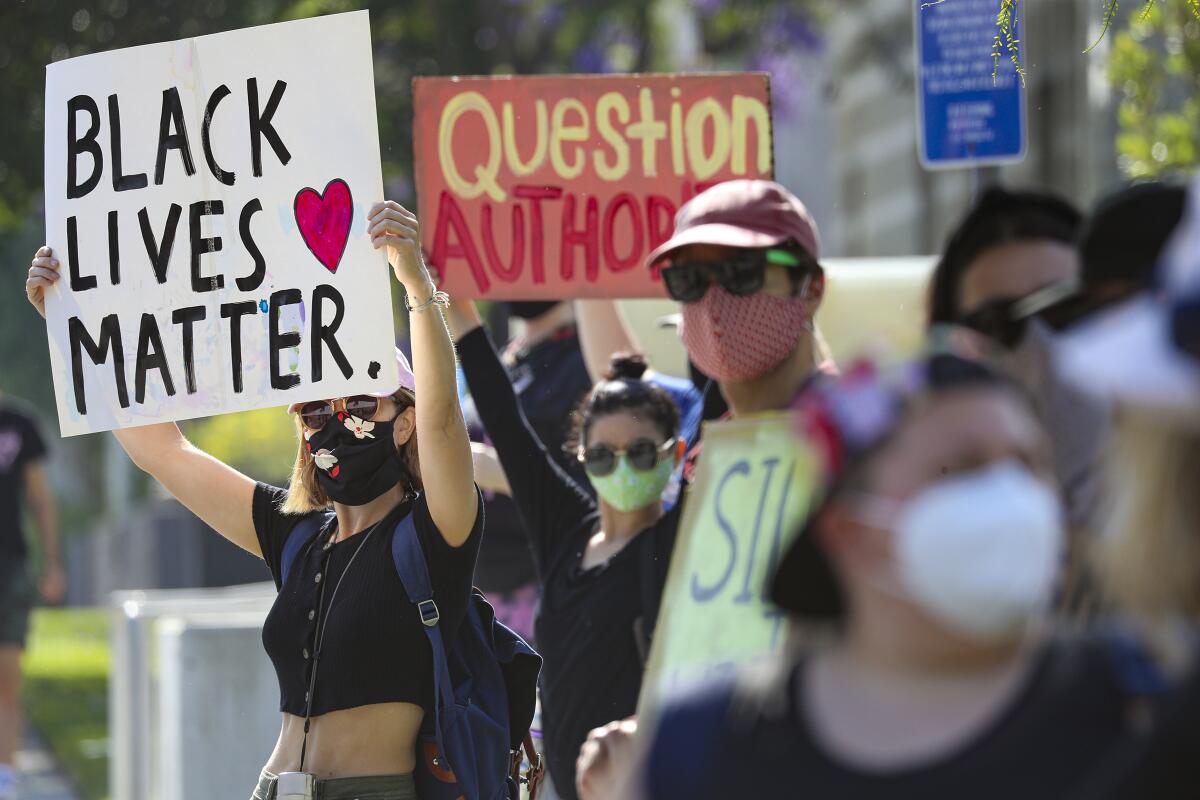
Members of Showing Up for Racial Injustice, a national network focused on organizing white people to fight racism, helped sponsor the protest attended by Michnoff and several dozen other mostly white protesters in North Hollywood on Thursday. Stevie Nelson, a 34-year-old white artist from Los Feliz, came out because âsitting at home doesnât feel like enough.â
Nelson had spent the week searching for ways to support the black community. She donated to social justice organizations and emailed a city councilman about an alternative spending plan for City Hall dubbed âthe Peopleâs Budget.â Sheâs come across posts on social media about black-owned coffee shops to support and recommendations for books and podcasts, finding Instagram to be a helpful tool in âhow to be of service without it being your black friendâs responsibility.â
Before the protests, her involvement with racial justice causes had been limited to donations.
âI paid attention, but it didnât necessarily lead to me acting,â said Nelson, who held a âBlack Lives Matterâ sign. âIâm ashamed of it, but Iâm grateful to show up even though Iâm late.â
Standing nearby, Leah Pablo, a 30-year-old Asian American North Hollywood resident, said previously she had mostly engaged with issues of race by sharing information on social media. She decided to attend the protest despite concerns about the pandemic after spending most of Tuesday listening to the Los Angeles Police Commissionâs weekly meeting. During the public comment session, speakers condemned the use of projectiles and tear gas against protesters.
âI heard over and over how the city hadnât done enough to protect people,â she said.
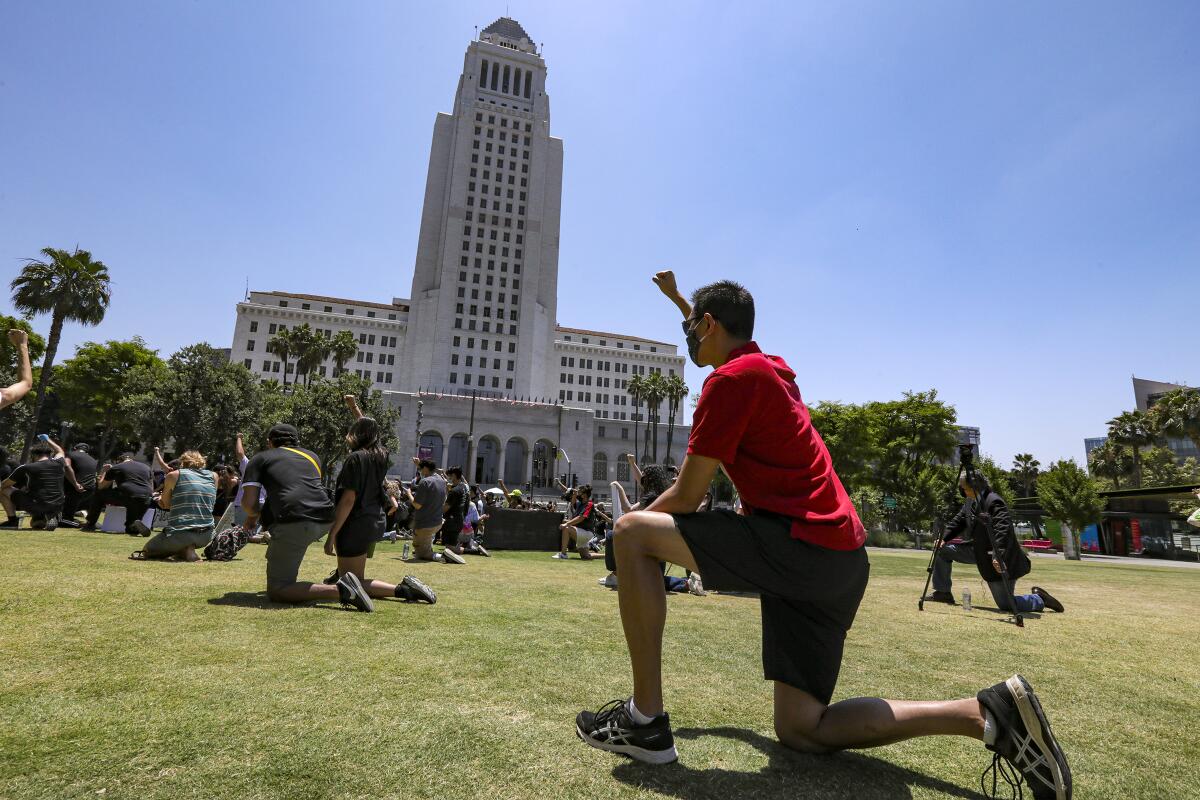
Local religious groups have also been spurred into action. The Rev. Zach Hoover, executive director of L.A. Voice, a multifaith organization, has received countless questions from clergy about how to become involved. Rabbis text him daily about where they should show up.
About 1,200 people attended a protest in Pasadena last weekend sponsored by churches within L.A. Voiceâs network and other congregations. Hoover said there had been both an internal recognition of the importance of the moment and also âpeople challenging each other in loving waysâ to step forward.
âNobody was like, we have to go have a conversation with our board,â he said. âIt was like, âSign us on, sign us on.ââ
Spiritual leaders have also sought to bridge gaps on a more intimate level. Rabbi Elazar Muskin of Young Israel of Century City, an Orthodox synagogue, and Bishop Kenneth Ulmer of Faithful Central Bible Church in Inglewood livestreamed a video chat Wednesday that was attended by more than 150 people. The two recognized during the meeting that both the Jewish and black communities had a history of being persecuted.
Ulmer explained to Muskin that his community feared that the protests âmight be a repetition of the pattern of the pastâ with an eventual return to âbusinesses as usualâ without meaningful change. But he acknowledged that the diversity of the protesters now seemed unprecedented.
âWe feel now that more people not like us get it,â he said. âWhat hurts is that it took this long for people to get it.â
Brandon Earl, a 35-year-old resident of downtown L.A., shared that perspective. As a black man, he said he faced racism constantly and that whenever he walked outside, he had to be conscious of how he dressed and spoke âin order to have some type of acceptance.â
A group of predominantly white neighbors from his apartment building attended a protest last week after he shared a photo of himself standing in front of National Guard trucks holding up a sign that read, âVote or Die.â
âWhen I see allies and people who donât look like me still marching and protesting and vocalizing their feelings about what was happening, that makes me feel a lot better as to where we stand right now,â Earl said.
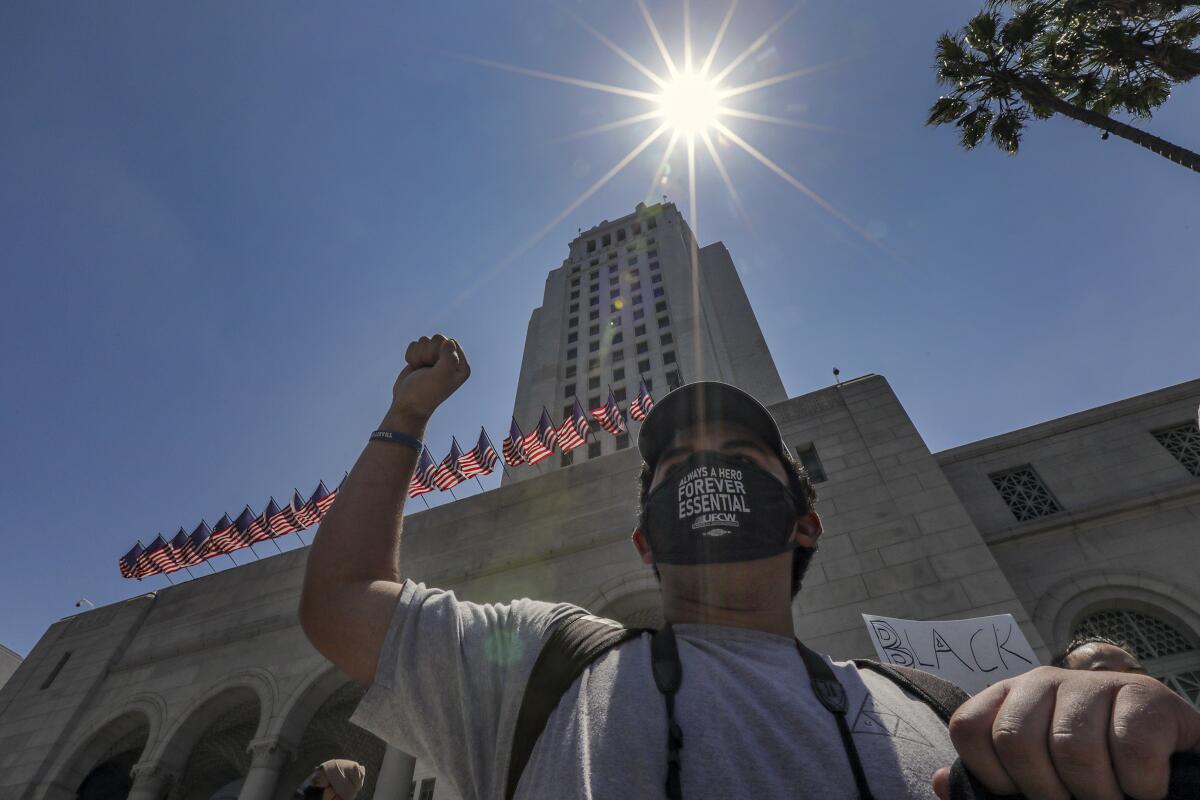
That message has been conveyed to protesters directly. Addressing several hundred people in front of the downtown L.A. courthouse Thursday, Allen Wesley, a 59-year-old black man, shared how his mother had been beaten by police when he was 11 years old.
âI see a lot of Black Lives Matter signs here and not that many blacks,â he told the crowd, most of whom were in their 20s and 30s. âThat gives me hope. ⌠We canât do it by ourselves.â
Listening nearby was Nathalie Illescas, an 18-year-old resident of East L.A. who held a sign that carried the words âDonât shoot.â It was her first protest, and she said she related to the oppression suffered by black people as a member of the Latino community whose family had received racist comments in public because of their skin color.
Although her parents were initially reluctant to let her attend because of the COVID-19 pandemic, she sat her mother down the day before.
âThis is serious,â Illescas told her. âItâs me speaking out and raising my voice.â
Also there for his first protest was Eduardo Realegeno, an 18-year-old Salvadoran American student from South L.A. Although he sees injustices in his own community, Realegeno said he didnât need to find parallels for Floydâs death to resonate.
âHeâs a human being, thatâs how I relate,â he said. âItâs not about being a minority. Itâs about standing with everyone here.â
More to Read
Sign up for Essential California
The most important California stories and recommendations in your inbox every morning.
You may occasionally receive promotional content from the Los Angeles Times.
